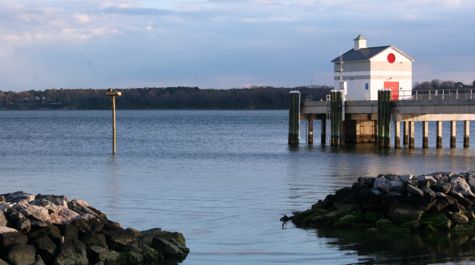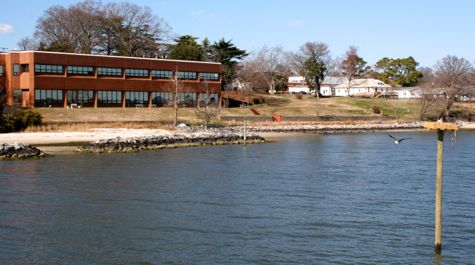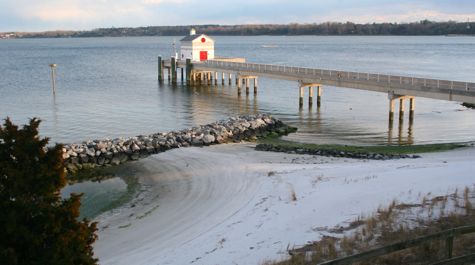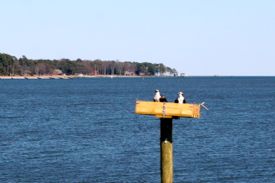About the "OspreyCam"

The video feed from the “OspreyCam” at the Virginia Institute of Marine Science comes from an AXIS P5655-E PTZ Network Camera. The camera captures real-time streaming video during daytime hours throughout the breeding season, and its pan-tilt-zoom feature allows VIMS researchers to track the adults and hatchlings as they move about the nest.
The camera—with an 32X optical zoom and a high-definition (1080 pixel) image—was installed in March of 2020 and operates during the osprey breeding and nesting season in the Chesapeake Bay. The season generally lasts from mid-March to October. The current camera replaces an earlier AXIS camera in the same location that was destroyed by a lightning strike in Fall 2019. That camera was installed in 2013.
The camera rises above the eaves of a pump house that adorns the end of VIMS’ Seawater Pier. It looks northeast toward the nesting platform, which was occupied by a pair of nesting osprey almost immediately after it was erected by Riverworks, Inc. of Gloucester Point in early March of 2013.
The video is fed wirelessly from the pumphouse to a computer server in a nearby administrative building.
The VIMS OspreyCam nest is #3730 in the Center for Conservation Biology's OspreyWatch project.
Previous VIMS OspreyCam

During 2011 and 2012, the VIMS OspreyCam was trained on a nest atop the 65'-foot-tall VIMS water tower. However, that camera (an Axis PTZ-214©) was destroyed by a lightning strike in late June of 2012. Given the likelihood of future camera failures due to the tower’s exposed location, VIMS staff decided instead to place a new camera at a more protected site on the VIMS Seawater Pier, with a telescopic view of a newly built nesting platform in the York River, which stands about 75 feet away.





